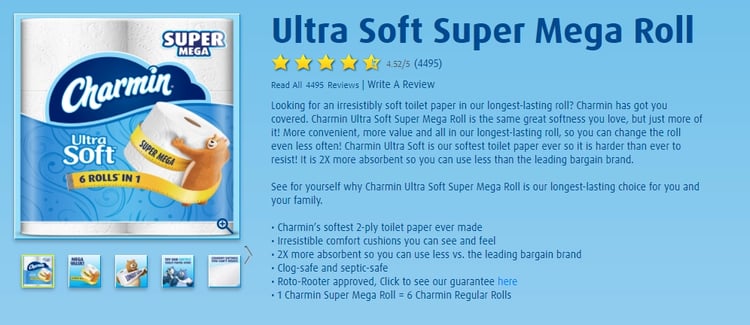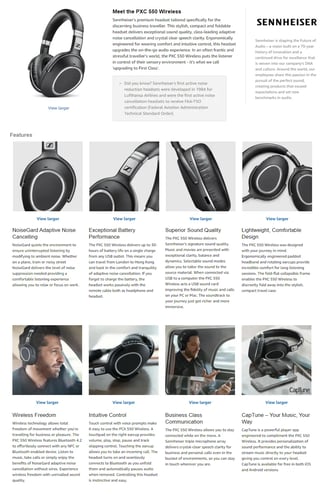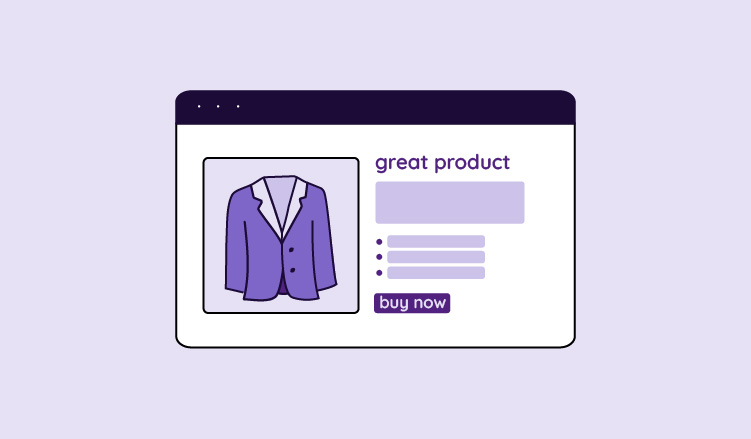In today’s world of Google crawlers and SEO, it can be difficult to find the right balance for product descriptions. Is it better to write a long text loaded with keywords and specifications, or keep it short and sweet for a human audience?
The answer, as usual, lies somewhere in between. So we’ve outlined a few simple guidelines to get you started crafting product descriptions that speak directly to your target audience without having to think too hard about the length.
Keeping product descriptions brief
Research has shown that if text online is too long, people simply don’t read it. Only 16% of users read text word for word. By cutting the length of the text by 54%, researchers found that not only were readers able to find and remember information more easily, they also scored it as more complete than the longer version!
This could be because a shorter, cleaner version will turn up more content words (nouns, verbs, adjectives..) than functional words (grammatical fillers like prepositions, pronouns...). Why does that matter? Well those functional words are usually skimmed right over. Content words are fixated on 85% of the time while those fillers are only read 35% of the time.
However, since you can’t even guarantee that readers online will make it past the first few sentences, at the very least, make sure to lead with the key features (and benefits) of your product.
Another thing to think about if you’ve done your homework (by which I mean checking up on your analytics), is how much of your audience is using a mobile device and what their age range is. Long product descriptions can take up a lot of real estate on a small screen, and the last thing you want to do is give someone an excuse to scroll past it. Young readers in particular are likely to skip over long texts (tl;dr).
For many everyday products, buyers know exactly what they want and don’t care about product specifications. If it’s something that’s likely to be purchased regularly, like toilet paper, it isn’t necessary to go into detail. No one needs to read an essay to know the necessity of toilet paper.

This Charmin Ultra Soft Super Mega Roll description has just under 160 words. There is no mystery about what the product is, and there never was any mystery about what it’s for - so Charmin uses those 160 words to talk about their differentiators. They even use bullet points to make the text more scannable.
But don't keep your descriptions short at the expense of clarity and consumer confidence. One study showed that 40% of products returned online were returned because something in the product description was inaccurate or didn’t meet their expectations. So make sure you give an accurate impression of the final product, no matter how brief. Always include the information that is necessary to make the purchase without fear.
When to flesh out the features
Short, concise product descriptions look great, but some products take much more than a paragraph to describe. If the product is expensive or the buyer doesn’t immediately recognize the brand, they will need a bit more sweet talking before handing over their hard earned money.
Big ticket items that are not everyday purchases benefit from longer descriptions. Buyers are likely to compare similar products and learn as much as they can before pulling the trigger. If your product doesn’t include a particular feature in your product description and your competitor’s does, you might have just lost a sale.
Complex tech products are also prime candidates for longer descriptions, often with well presented product specifications thrown in. Fortunately, more tech savvy shoppers appreciate these kinds of details, so if that’s your target audience there should be no question: go long!
But not too long.
Anything over 600 words is pushing your luck. Product descriptions are just that - descriptions, and you shouldn’t need to go too deep into development and history. If you find yourself repeating features, it’s time to go back and make some cuts.

This product description for Sennheiser’s PXC 550 wireless headphones might seem long, but true audiophiles will appreciate the extra information.
Regardless of the length of your product description, there are a few things that you should keep in mind:
- Keywords are important, but should be written into the description naturally. If you aren’t able to make it flow into the text, it probably shouldn’t be one of your keywords in the first place
- Don’t repeat yourself, and even more importantly don’t repeat the same text from other products in your description. No one likes to read the same few facts over and over, and Google crawlers certainly don’t like duplicate content
- If you can’t fit all your most important product features into the description, make it a bit longer. It’s better to add details at the end for those who read that far, as long as you don’t go overboard. No one needs to know the pantone value of the trim on their slippers.
- Make good use of your space and visual assets. Rely on images and video to tell part of the story. Cut descriptions into parts, bullets, or locate the more in-depth information below the fold. We can safely assume that those who scroll are looking for more.
If you still aren’t sure which is best for you, try one out, see what works, then find ways to improve it!
Frequently Asked Questions




